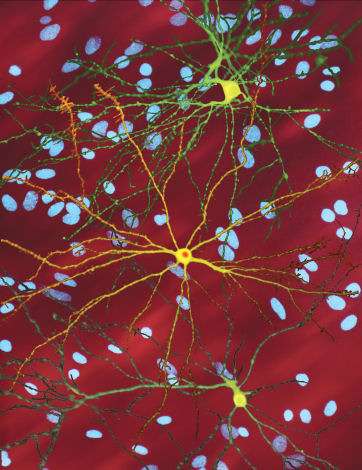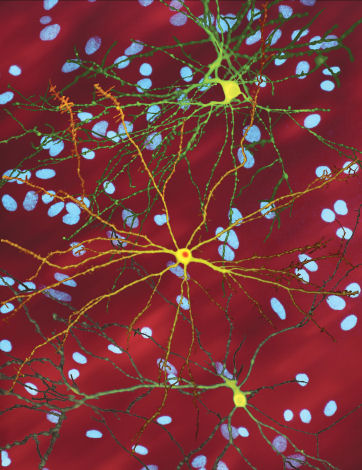
Researchers at the University of Miami Miller School of Medicine, McGill University and other institutions have found that a well-concealed genetic variation in the gene FGF14, called a DNA tandem repeat expansion, causes a common form of late-onset cerebellar ataxia, a brain disorder that interferes with coordinated movement. Tandem repeat expansions are only found in 50 conditions, including Friedreich’s ataxia and Huntington’s disease, but researchers believe they could account for many other conditions.
The paper, “Deep Intronic FGF14 GAA Repeat Expansion in Late-Onset Cerebellar Ataxia,” is published online on December 14 in the New England Journal of Medicine. These findings could lead to new diagnostics and therapeutics for patients suffering from late-onset ataxia.
“This form of ataxia strikes people relatively late in life, and there are virtually no treatments,” said Stephan Züchner, M.D., Ph.D., co-director of the John P. Hussman Institute for Human Genomics, Chief Genomics Officer for the Miller School of Medicine and co-senior author on the study. “But now, we know the disease is caused by a single gene, and that should lead to great therapeutic progress.”
Late-onset ataxia is heavily concentrated in specific populations, including French Canadians. Co-senior author Bernard Brais, M.D.C.M., M.Phil., Ph.D., Director of the Rare Neurological Diseases Group at McGill University in Montreal, treats many patients with this condition. His expertise in ataxia and related disorders and research registry of patients and families in Quebec were fundamental to the study’s success.
The late-onset ataxia expansion was found in the FGF14 gene, which is associated with cell growth, tissue repair, and other tasks. While this gene is well-studied, nobody had ever seen these repeat expansions, largely because of how RNA is processed in cells.
RNA can be separated into two categories: exons and introns. Exons code for proteins; introns contain non-coding RNA between the exons. Because introns are spliced out of the coding RNA strand, it can be difficult to determine how intronic sequences, such as FGF14’s repeat expansions, impact protein production.
In the study, the teams in Miami and in Montreal sequenced complete genomes from French Canadian, German, Australian and Indian families, applying a new, advanced computer algorithm to identify repeat expansions. Matt Danzi, Ph.D., associate scientist in Dr. Züchner’s lab and co-primary author on the paper, spotted the crucial abnormalities in patient genomes. Co-primary author David Pellerin, M.D., a research fellow at McGill, confirmed and characterized these unusual non-protein coding repeat expansions in patients.
Dr. Züchner and his team have earned a broad reputation for solving genetic mysteries in rare neurological diseases. In this case, they had early access to advanced software tools and had prepared unique databases of healthy controls, allowing them to boost the ability of short-read genomic sequencing to identify hidden intronic variations. Later, the Miami and Montreal teams used long-read sequencing to confirm their findings. One of the next steps will be to understand how these expansions disrupt FGF14.
“As best we can tell, these repetitive expansions just make it difficult for the gene to be expressed at normal levels,” said Dr. Danzi. “The affected DNA and RNA gets much larger than usual and interferes with normal RNA processing. Cells end up with a lot less of the protein than they need.”
These findings have already generated a flurry of activity around FGF14 and late-onset ataxia. Identifying the condition’s genetic driver will give scientists and clinicians a critical tool to diagnose more patients. Current efforts have found more than 500 families with the variant and follow-up studies may take that number over a thousand. Repeat expansions in FGF14 may prove to be the most common form of late-onset ataxia.
In addition, identifying anomalies in one gene means researchers can begin to develop new diagnostic tests, animal models, and eventually therapies to combat it. Treatments being developed for Friedreich ataxia may be used to treat patients with FGF14 expansions. Patients may also benefit from a drug called 4-aminopyridine, which is already being used to treat other neurological conditions.
More information:
Deep Intronic FGF14 GAA Repeat Expansion in Late-Onset Cerebellar Ataxia, New England Journal of Medicine (2022).
Journal information:
New England Journal of Medicine
Source: Read Full Article
